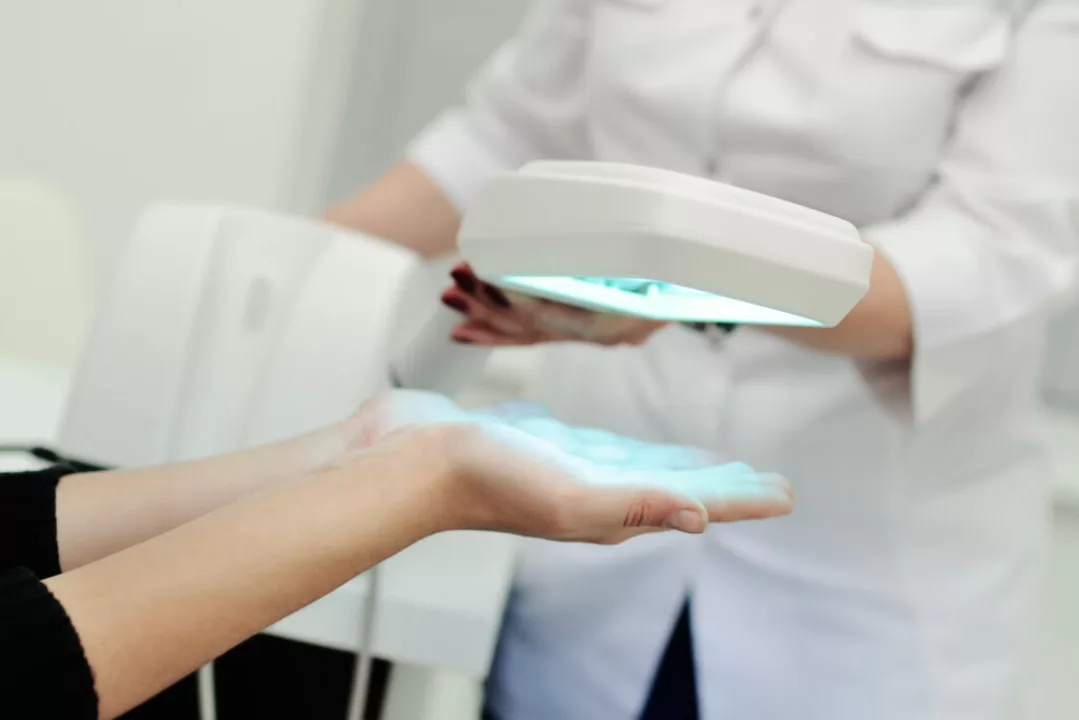Phototherapy: How light helps skin, mood, and newborns
Phototherapy means using light to treat medical problems. You’ve probably heard of it for newborn jaundice or seasonal depression, but doctors use light for skin conditions, acne, and some cancers too. The idea is simple: the right type and dose of light changes cells and inflammation so symptoms improve.
How phototherapy works
Different wavelengths do different things. Narrowband UVB (311–313 nm) calms immune activity in psoriasis and eczema. PUVA pairs a medicine (psoralen) with UVA to treat tougher cases. Blue light targets bacteria in acne and breaks down bilirubin in newborns. Bright white light at 10,000 lux helps reset the brain’s clock for seasonal affective disorder (SAD). Your clinician picks the type and schedule based on diagnosis, skin type, and past treatments.
Treatment frequency varies. For plaque psoriasis, narrowband UVB is often given 2–3 times a week for several weeks. For SAD, daily 20–30 minute morning sessions with a 10,000 lux lamp are common. Newborns may need continuous blue light for a day or two until bilirubin falls.
Practical tips & safety
If you’re considering phototherapy, talk to a dermatologist or pediatrician first. They’ll check your skin type, medications, and medical history. Some drugs — like tetracyclines, certain antidepressants, and St. John’s wort — make skin more sensitive to light and raise burn risk.
At the clinic you’ll get eye protection, dosing records, and a plan to increase exposure safely. Home devices exist for SAD and mild skin issues, but buy only medical-grade lamps and follow instructions. Never improvise with tanning beds: they use different light and higher cancer risk.
Common side effects are redness, itch, mild burns, and faster skin aging with long-term UV exposure. There’s also a small increased lifetime risk of skin cancer from repeated UV treatments, so doctors aim for the lowest effective dose and regular skin checks.
For newborns, phototherapy is very effective and widely used. Hospitals monitor temperature, hydration, and bilirubin levels closely. At-home infant devices should only be used with pediatric guidance and follow-up labs.
Keep practical notes: track session dates, doses, and any skin changes. Use eye protection every session, cover unaffected skin, and use moisturizer to reduce dryness. If redness or blistering appears, stop treatment and contact your provider.
Phototherapy works well for many people, but it isn’t a one-size-fits-all cure. Expect several sessions before seeing steady improvements and plan follow-up care. Ask about alternative or combined treatments—topical meds, injections, or systemic drugs may improve results when light alone isn’t enough.
If you want help deciding whether phototherapy is right for you or a family member, note the condition, current meds, and any history of skin cancer before your visit. That simple prep helps your clinician create a safe, effective plan fast.

The Benefits of Phototherapy for Eczema Treatment
Apr 29 2023 / Health and WellnessAs someone who has struggled with eczema, I can't stress enough the benefits of phototherapy for eczema treatment. This non-invasive treatment uses ultraviolet (UV) light to soothe inflammation and improve the skin's overall appearance. Not only does it provide relief from itching and discomfort, but it also reduces the need for topical creams and steroids. The best part is that it's safe for long-term use, with minimal side effects, making it a reliable option for managing this stubborn skin condition. I highly recommend giving phototherapy a try if you're looking for an effective way to treat your eczema.
VIEW MORE